supervolcano
description: a volcano that has had an eruption with a Volcanic Explosivity Index of 8, the largest value on the index
49 results
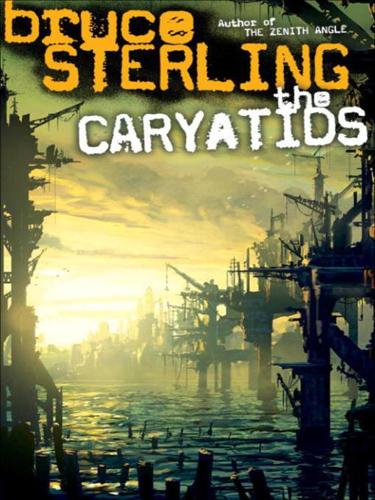
The Caryatids
by
Bruce Sterling
Published 24 Feb 2009
The results were ugly. They had hit on a subject that knowledgeable experts had been discussing for a hundred years. The most heavily trafficked tag was the strange coinage “Supervolcano.” Supervolcanoes had been a topic of mild intellectual interest for many years. Recently, people had talked much less about supervolcanoes, and with more pejoratives in their semantics. Web-semantic traffic showed that people were actively shunning the subject of supervolcanoes. That scientific news seemed to be rubbing people the wrong way. “So,” said Guillermo at last, “according to our best sources here, there are some giant … and I mean really giant magma plumes rising up and chewing at the West Coast of North America.
…
Raph still wasn’t buying it. “The other sources said that ‘Yellowstone’ was a supervolcano. Not ‘Yosemite.’ Yellowstone is way over in Montana.” “You do agree that supervolcanoes exist, though. They’re a scientific fact of life on Earth. That’s what I’m asking.” “They exist. If you insist. But the last supervolcano was seventy-four thousand years ago. Not during this business quarter. Not this year. Not even one thousand years. Seventy-four thousand years, Freddy.” Freddy looked down and slowly quoted from his notepad. “ ‘The massive eruption of a supervolcano would be a planetary catastrophe. It would create years of freezing temperatures as volcanic dust and ash obscured the warmth of the sun.
…
“That’s because this source material is eighty years old. Geologists know a whole lot about supervolcanoes. Nobody else in the world wants to think about supervolcanoes.” Buffy was losing her temper. “But this is so totally unbelievable! The sky already darkened! The black rain already fell on us! We already have a climate crisis, we have one going on right now! Now we’re supposed to have another crisis, out of nowhere, because California blows up from some supervolcano? What are the odds?” “Well, that question’s pretty easy,” said Freddy. “A supervolcano under the Earth doesn’t care what we humans did to the sky. If it blows up, then it just blows up!

Fire and Ice: The Volcanoes of the Solar System
by
Natalie Starkey
Published 29 Sep 2021
This, I think, is a lovely sounding word for a terrifying phenomenon, one that is not just confined to Iceland but has the potential to occur at any place where hot volcanoes interact with ice. Supervolcanoes I probably can’t complete this chapter without mentioning supervolcanoes. They get a lot of attention in the press, particularly Yellowstone in the USA. Thanks to the public’s fascination with volcanoes like Yellowstone, and its potentially large and destructive future eruptions, the media can often report that a supervolcano is due to have a ‘big one’ soon, when in reality that is never the case. Nevertheless, scientists have found evidence for around 47 supereruptions from volcanoes like Yellowstone throughout Earth history, and there are even six active supervolcanoes at the present day.
…
The reason for the press coverage is perhaps understandable, because despite no ‘supervolcanic’ eruptions for over 26,500 years, there is a large potential for huge destruction. Supervolcanoes are sometimes known as mega-calderas because when they happen to have a big eruption, they efficiently empty all the magma stored in their chamber sitting below the ground, leaving behind a depression that the ground above collapses into, forming a caldera, the large hollow depression that forms in the ground after a major eruption. These types of volcanoes are classified by their size and magnitude, having had an eruption in their history that measures VEI 8 or greater, meaning they erupt over 1,000 cubic kilometres (240 cubic miles) of deposits. While supervolcanoes are marked by their voluminous eruptions, they can also have smaller eruptions as part of their normal activity.
…
These differences, while small, help scientists to map out the extent of the flows and, after careful analytical and experimental laboratory work, they have concluded that the colour is related to the composition of the flow, with its varying amounts of iron and titanium. If we want to look for comparable flows on Earth, then the largest basaltic eruptions we know about on our planet are the flood basalts, of which there are no modern examples. We touched on these flows in Chapter 2 in relation to supervolcanoes. And while we tend to think of supereruptions as the explosive type, such as Lake Toba, as we discussed previously, they are actually defined by the volume of their magmatic outpourings. As such, large basaltic eruptions such as the flood basalts that aren’t necessarily as explosive can also fall into this category.
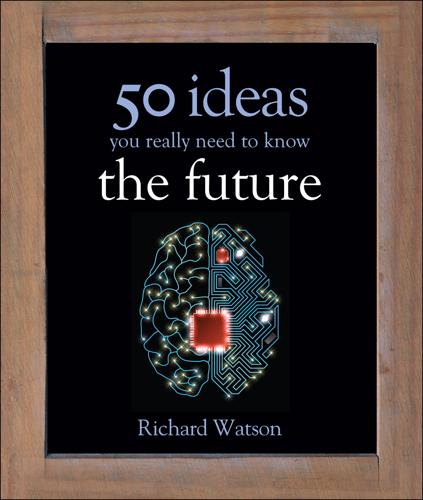
50 Future Ideas You Really Need to Know
by
Richard Watson
Published 5 Nov 2013
Some people claim that the Mayan calendar says that the world will end on December 21, 2012. Why might this occur? One commentator (a website called Armageddon online) says it’s to do with shifts in magnetic fields. The same commentator gives odds of 10:1 against a supervolcano erupting on the same date. That’s not it either. That’s just supervolcanoes. Other potentially devastating superevents might include a major eruption that triggers an earthquake, which triggers a series of other earthquakes or a tsunami the scale of which we’ve never experienced before. All of these events are highly unlikely to occur within our lifetimes, but they’re not impossible and if they were to occur the impacts could be catastrophic.
…
Big bang How you view earthquakes, volcanoes and tsunamis depends on where you live. If you live in Japan, for instance, you’ll be all too familiar with the destructive power of nature. If you live in San Francisco, and are relatively young, you will be less familiar. However, what we all have in common is that within living memory nobody has experienced what happens when a supervolcano explodes. Hopefully, nobody will know for at least a few thousand years. We’d cope, of course, but one sometimes wonders what the fallout would be in a world where supply-chain tolerances are so tight. The world is now interconnected like never before and global companies that source and transport components from all over the world cannot cope for long with major disturbances or disruptions in critical regions.
…
Helens in the USA erupted just 1km3 (0.24 cubic miles) of material. Yellowstone is huge, as we can see from evidence of previous eruptions, and it tends to explode every 600,000 years or so. When was the last really big Yellowstone eruption? About 600,000 years ago! Dire results So what might happen if Yellowstone, or another supervolcano, exploded during our lifetime? Nobody knows, of course, but the implications could be truly devastating. “…They slept on the abyss without a surge—The waves were dead; the tides were in their grave, The Moon, their mistress, had expired before; The winds were withered in the stagnant air, And the clouds perished!

Practical Doomsday: A User's Guide to the End of the World
by
Michal Zalewski
Published 11 Jan 2022
This is unfortunate, and not just as a matter of probabilities. Such uninspiring but familiar events, recounted firsthand by our friends and relatives, provide the most grounded and tractable way to bootstrap a personal response-and-recovery plan. Even the most rigorous strategy preoccupied with supervolcanoes and cosmic weather is, at the end of the day, just a work of speculative fiction. In contrast, a plan that draws lessons from the plight of a coworker impacted by layoffs is quite likely to survive a collision with reality. It’s true that many of these everyday disasters aren’t a matter of life and death.
…
Just like the portrayal of nuclear war, many popular doomsday predictions are based on absurd or exaggerated science, frequently employed to advance a preconceived goal. Other claims in this space focus on events that are quite possible on cosmic timescales, but exceedingly unlikely within the span of our lives; in this category, asteroids and supervolcanoes are of particular note. And a handful of prophecies—such as the fears of malicious artificial intelligence—are simply unknowable, devoid of any quantifiable risk or historical precedent. That said, behind every exaggeration is a grain of truth that can perhaps alert us to less extreme but more probable outcomes worth accounting for in a level-headed emergency-response plan.
…
In contrast to some other topics discussed in this chapter, many of the concerns about ecosystem collapse are rooted in reasonable science and solid historical precedent. For example, massive volcanic activity has been implicated in the Permian extinction event that wiped out 70 percent of vertebrate life about 250 million years ago,12 and one of the still-active supervolcanoes—the Yellowstone Caldera—is believed to be capable of covering much of the United States in 10 feet of ash.13 Similarly, the impact of a large asteroid or comet is widely believed to have been the culprit of the Cretaceous–Paleogene extinction that wiped out the dinosaurs,14 and the pockmarked face of our own moon is a reminder that such cosmic events happen in our neighborhood with some regularity.

Enlightenment Now: The Case for Reason, Science, Humanism, and Progress
by
Steven Pinker
Published 13 Feb 2018
Easterbrook, “We’re All Gonna Die!” Wired, July 1, 2003. 14. P. Ball, “Gamma-Ray Burst Linked to Mass Extinction,” Nature, Sept. 24, 2003. 15. Denkenberger & Pearce 2015. 16. Rosen 2016. 17. D. Cox, “NASA’s Ambitious Plan to Save Earth from a Supervolcano,” BBC Future, Aug. 17, 2017, http://www.bbc.com/future/story/20170817-nasas-ambitious-plan-to-save-earth-from-a-supervolcano. 18. Deutsch 2011, p. 207. 19. “More dangerous than nukes”: Tweeted in Aug. 2014, quoted in A. Elkus, “Don’t Fear Artificial Intelligence,” Slate, Oct. 31, 2014. “End of the human race”: Quoted in R. Cellan-Jones, “Stephen Hawking Warns Artificial Intelligence Could End Mankind,” BBC News, Dec. 2, 2014, http://www.bbc.com/news/technology-30290540. 20.
…
Even if we had remained technologically humble hunter-gatherers, we would still be living in a geological shooting gallery.13 A burst of gamma rays from a supernova or collapsed star could irradiate half the planet, brown the atmosphere, and destroy the ozone layer, allowing ultraviolet light to irradiate the other half.14 Or the Earth’s magnetic field could flip, exposing the planet to an interlude of lethal solar and cosmic radiation. An asteroid could slam into the Earth, flattening thousands of square miles and kicking up debris that would black out the sun and drench us with corrosive rain. Supervolcanoes or massive lava flows could choke us with ash, CO2, and sulfuric acid. A black hole could wander into the solar system and pull the Earth out of its orbit or suck it into oblivion. Even if the species manages to survive for a billion more years, the Earth and solar system will not: the sun will start to use up its hydrogen, become denser and hotter, and boil away our oceans on its way to becoming a red giant.
…
It’s technically feasible to track the trajectories of asteroids and other “extinction-class near-Earth objects,” spot the ones that are on a collision course with the Earth, and nudge them off course before they send us the way of the dinosaurs.16 NASA has also figured out a way to pump water at high pressure into a supervolcano and extract the heat for geothermal energy, cooling the magma enough that it would never blow its top.17 Our ancestors were powerless to stop these lethal menaces, so in that sense technology has not made this a uniquely dangerous era in the history of our species but a uniquely safe one. For this reason, the techno-apocalyptic claim that ours is the first civilization that can destroy itself is misconceived.
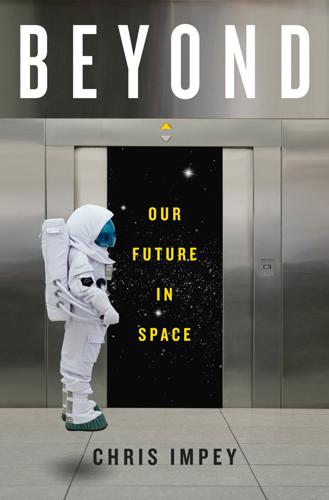
Beyond: Our Future in Space
by
Chris Impey
Published 12 Apr 2015
Also, inbreeding is more likely, with offspring having an increased chance of recessive or deleterious traits.20 When geneticists sequenced the DNA of chimps and humans, they made the staggering discovery that a single band of thirty to eighty chimps can have more genetic diversity than all seven billion humans alive today.21 We have very little genetic diversity, even though it could have developed since we diverged from chimps six million years ago. Research on mankind’s restricted gene variation indicates that humans migrated out of Africa about 60,000 years ago, and at some stage before that our numbers may have dwindled to as low as two thousand. Some geneticists hypothesize that this bottleneck was caused by the explosion of the Toba supervolcano in Indonesia and resulting major environmental change.22 Regardless of the cause, our genetic makeup hints at the fact that we were once in a perilous state, at the edge of extinction.23 More recent human history gives better examples of how to define the viable size of a space colony. When a new population is established by a small number of individuals from a larger population, it’s subject to the founder effect, first described by evolutionary biologist Ernst Mayr.
…
His partial list of existential threats faced by humanity includes nuclear holocaust, genetically engineered superbugs, environmental disasters, asteroid impacts, terrorism, advanced and destructive artificial intelligence, uncontrollable nanotechnology, catastrophic high-energy physics experiments, and a totalitarian regime with advanced surveillance and mind-control technologies. Regarding existential threats that might act as a filter in our future, Bostrom makes another point. The requirement is not that it has a significant probability of destroying humanity. Rather, it must be able to plausibly destroy any advanced civilization. Asteroid strikes and supervolcanoes don’t qualify because they’re random events that some civilizations will survive and others won’t experience because their planet and solar system are different from ours. The technological innovations that drive the argument and act more effectively as filters are those that almost all civilizations eventually discover, where their discovery almost universally leads to disaster (Figure 55).
…
Louis, The (Lindbergh), 90 Spirit rover, 165 Sputnik 1, 37–39, 37, 40, 41, 51, 65, 141, 269 Sputnik 2, 47, 269 Sputnik 3, 39, 269 SR-71 “Blackbird,” 69 Stafford, Tom, 55 Stalin, Joseph, 35, 37, 253 Stapledon, Olaf, 253 Stapp, John, 46 Stark, Tony (Iron Man), 95, 96, 205 stars: ancient Greek concept of, 18 as basis of carbon, 256 in exoplanet detection, 126–28, 129, 130–31 Sun-like, 131, 133, 187, 215, 233, 236 Star Trek, 88, 90, 92, 167, 192, 228–29, 268 Star Trek: The Next Generation, 229, 232 Stephenson, Neal, 103 Stevenson, Robert, 114 Stone, Bill, 97–98, 161 string theory, 257 Student, The, 86 Sub-Biosphere 2, 197 suitports, 196 Sun: ancient Greek concept of, 18 demise of, 197, 286 as energy source, 124, 223, 253 formation of, 156 stars that are similar to, 131, 133, 187, 215, 233, 236 Sunjammer, 185, 284 Survivor (TV series), 75 suspended animation, 250–52 Synergia Ranch, 192 tachyons, 228 taikonauts, 142–43 tardigrades (water bears), 122 Tarter, Jill, 242–43 Tau Ceti, 187–88, 237 Teacher in Space program, 55, 74 technological maturity, 260–61 technology: advancements in, 127, 133, 159–60, 224, 231, 241, 250, 257–62, 288, 292 alien, 186–91 in cameras, 53 computation, 258–62 destructive potential of, 245–46 development of, 20 for efficient energy production, 220–24, 221 erroneous predictions about, 213–14 in foods, 115–16 human beings surpassed by, 258–59 Kardashev’s scale for, 253–54 outdated, 64–65, 106 of remote sensing, 175–91 of spacesuits, 195–96 speculative and hypothetical, 228–32 trust in, 98 in weaponry, 22–24 see also nanotechnology; specific technologies TED2014 conference, 178 telepathy, cybernetic, 206 teleportation, 228–32, 230, 252 telepresence, 176–79, 283 telerobotics, 177–78 telescopes, 31, 49–50, 126, 128, 129–30, 158, 163, 187, 190, 218, 235, 292–93 see also specific instruments Telstar, 153 Tereshkova, Valentina, 74 Terminator, The, 259 terraforming, 172–74, 182, 216–17, 227 terrestrial exoplanets, incidence of, 128, 129, 216, 241 terrorism, 152–53 Tesla, Nikola, 237 Tesla Motors, 96–97, 97 test pilots, 71–74, 272 Tethers Unlimited, 226 Thales, 18–19 “There’s Plenty of Room at the Bottom” (Feynman), 180 thought experiments: and birth of science, 19 for Dyson sphere, 253–54 of Newton, 25 on self-replication, 226–27 3-D fabrication, 159, 160, 226–27, 226 thrust, in flight, 68–69, 72, 186, 220, 222–23 thymine, 6 Timbisha tribe, 118–19 Titan, 53, 125, 177, 182, 278 Tito, Dennis, 75, 170 Toba supervolcano, 202 toilets, in space travel, 116–17 Tokyo Broadcasting System, 75 tortoises, in space research, 49 Tower of Babel, 148 “Tranquility” (toilet), 117 transhumanism, 207–8 transit method, exoplanet detection by, 128–29, 128, 129, 130–31 “Transmission of Information by Extraterrestrial Civilizations” (Kardashev), 253 transporter devices, 228–32 TrES-2B (exoplanet), 132 tricorder devices, 92 Tristan da Cunha, 202–3 “True Story, A” (Lucian of Samosata), 20 Truman, Harry, 36 Tsiolkovsky, Konstantin Eduardovich, 26–28, 36, 72, 110, 149, 268 rocket equation of, see rocket equation Turing, Alan, 258–59 twin research studies, 98 Tziolas, Andreas, 224 UFOs, 142 belief in, 102, 238 proported sightings of, 239, 240 Ulam, Stanislaw, 221 uncertainty principle, 229–30, 291 United Arab Emirates (UAE), 106 United Nations, 47, 141, 145, 147, 214 General Assembly, 42 Moon Treaty of, 279 United States, 141 bureaucracy of, 105–9 China’s relations with, 144 energy consumption of, 222 founding of, 109 government shutdown of 2013 in, 63–64 rocket development in, 28–30, 35–39 space policy debate in, 146–47 space program of, 38, 40–45, 47, 50, 51, 55–56, 56, 63–64, 72, 74–75, 107, 140–141, 140, 154, 184, 195, 296, 271; see also National Aeronautics and Space Administration in World War II, 34 Uranus: probes to, 52 as uninhabitable, 125 V-2 ballistic missile (Retaliation/Vengeance Weapon 2), 30–36, 33, 47, 48 vacuum: as lethal, 54, 108 rocket function in, 30 of space, 70, 108, 126, 195, 222 Vanguard rocket, 36–38, 269 Van Thillo, Mark, 194 Vega (star), 236 Venera 7, 51 Venus: Earth compared to, 171, 215 fly-by of, 51 nanobot exploration of, 182 probes to, 40, 51, 184, 270 property rights on, 145 as uninhabitable, 124 Verne, Jules, 26, 28, 117, 183, 239 vertical takeoff and landing (VTOL) rockets, 103 Very Large Array, 236 videoconferencing, 176 video games: evolution of, 175–77 simulation compared to, 261 Vietnam War, 158 Viking probes, 51, 52, 164, 176 Virgin Atlantic airline, 87 Virgin Galactic, 88–89, 88, 101, 105–6, 113 Virgin Group, 87 Virgin records, 86–87 virtual reality, 176–77 volcanoes: on Earth, 119, 202 on Io, 53, 177 as source of heat energy, 124 super-, 245 Volna rocket, 184 Vomit Comet, 114 von Braun, Wernher, 28, 30–36, 38, 76, 140, 166–67, 269 von Kármán, Theodore, 141 von Littrow, Joseph, 238 von Neumann, John, 227, 258–59 von Neumann probes, 227, 258 Voskhod 2 spacecraft, 108 Vostok 1 spacecraft, 40–41 Voyager 1, 52, 53, 121, 121, 125, 219, 225 Voyager aircraft, 83 Wakata, Koichi, 273 Wallace, Alfred Russel, 164 Wang Yaping, 142–43 Wan Hu, 21–22, 22, 24, 31, 139, 141 warfare, rockets in, 22–24, 30, 32–34 War of the Worlds, The (Wells), 164 warp drive, 228–29 Warwick, Kevin, 206–8 Wasp 18b (exoplanet), 132 water: acidification of, 195 as biomarker, 217–18 on Earth, 172 on Europa, 125 on exoplanets, 132 on Mars, 124–25, 163–66, 165, 170, 172, 173 on Moon, 159–61 as requirement for life, 123–25, 132, 214, 217 in space travel, 116, 159 Watson, Thomas, 213 weaponry: nuclear, 36, 38 technological roots of, 22–24 weightlessness, 54, 88, 114, 167–68, 200 Weisman, A., 293 Welles, Orson, 164 Wells, H.
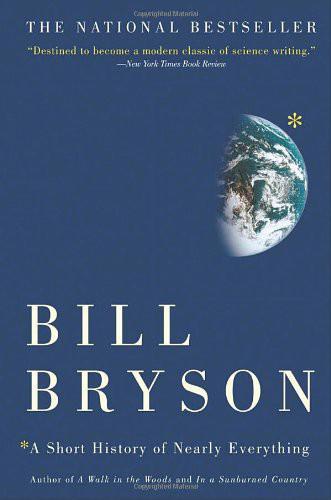
A Short History of Nearly Everything
by
Bill Bryson
Published 5 May 2003
As soon as Christiansen saw the photos he realized why he had failed to spot the caldera: virtually the whole park—2.2 million acres—was caldera. The explosion had left a crater more than forty miles across—much too huge to be perceived from anywhere at ground level. At some time in the past Yellowstone must have blown up with a violence far beyond the scale of anything known to humans. Yellowstone, it turns out, is a supervolcano. It sits on top of an enormous hot spot, a reservoir of molten rock that rises from at least 125 miles down in the Earth. The heat from the hot spot is what powers all of Yellowstone's vents, geysers, hot springs, and popping mud pots. Beneath the surface is a magma chamber that is about forty-five miles across—roughly the same dimensions as the park—and about eight miles thick at its thickest point.
…
Only two things are certain: that the crust at Yellowstone is thin and that the world beneath it is hot. But whether the crust is thin because of the hot spot or whether the hot spot is there because the crust is thin is a matter of heated (as it were) debate. The continental nature of the crust makes a huge difference to its eruptions. Where the other supervolcanoes tend to bubble away steadily and in a comparatively benign fashion, Yellowstone blows explosively. It doesn't happen often, but when it does you want to stand well back. Since its first known eruption 16.5 million years ago, it has blown up about a hundred times, but the most recent three eruptions are the ones that get written about.
…
If you wanted to grow crops again, you would have to find some place to put all the ash. It took thousands of workers eight months to clear 1.8 billion tons of debris from the sixteen acres of the World Trade Center site in New York. Imagine what it would take to clear Kansas. And that's not even to consider the climatic consequences. The last supervolcano eruption on Earth was at Toba, in northern Sumatra, seventy-four thousand years ago. No one knows quite how big it was other than that it was a whopper. Greenland ice cores show that the Toba blast was followed by at least six years of “volcanic winter” and goodness knows how many poor growing seasons after that.
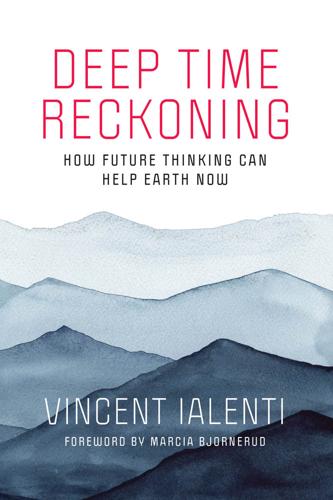
Deep Time Reckoning: How Future Thinking Can Help Earth Now
by
Vincent Ialenti
Published 22 Sep 2020
I myself do not put forth utopian or dystopian scenarios of possible, probable, preferable, or unfavorable future worlds. Rather, I offer a repertoire of anthropological tools—“reckonings”—as a how-to guide for engaging with others’ future visions. My methods may contrast with those of, say, existential risk scholars who reckon future nuclear wars, asteroid impacts, super-volcanoes, pandemic diseases, climate change, robot uprisings, and other cataclysmic events in more arcane ways. Yet we all share a common question: how can we foster human and ecological flourishing across future millennia, despite the many powerful economic, political, cultural, and intellectual forces working against us?
…
This situation is exacerbated by widespread skepticisms of technocratic knowledge, liberal arts education, scientific research on the environment, and even the very possibility of there being verifiable facts, truth, or a single shared reality. Existential risk A severe future risk that could destroy global human flourishing, cripple civilizational progress, trigger human extinction, or end life on Earth. Examples include pandemic disease, a supervolcano eruption, a total nuclear war, a large asteroid impact, or a hostile insurrection of artificially intelligent machines. Geoengineering A term for proposals to technologically manipulate our planetary environment in order to strategically reduce the effects of climate change. Examples include proposals to pour fertilizers into the Earth’s oceans to raise their carbon dioxide uptake, or to pump reflective particles into the Earth’s atmosphere to deflect sunlight.
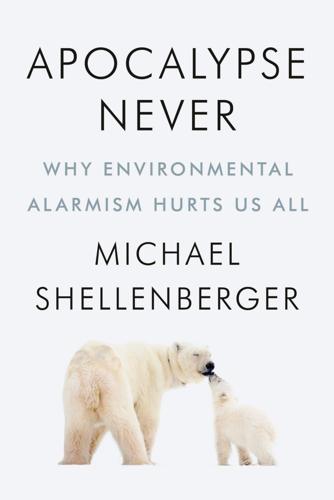
Apocalypse Never: Why Environmental Alarmism Hurts Us All
by
Michael Shellenberger
Published 28 Jun 2020
In July 2019, NASA announced it had been caught by surprise when a “city-killer” asteroid passed by — just one-fifth of the distance between Earth and Moon.109 In December 2019, a volcano unexpectedly erupted in New Zealand, killing twenty-one people.110 And in early 2020, governments around the world scrambled to cope with an unusually deadly flu-like virus that experts say may kill millions of people.111 Have governments sufficiently invested to detect and prevent asteroids, super-volcanoes, and deadly flus? Perhaps, or perhaps not. While nations take reasonable actions to detect and avoid such disasters they generally don’t take radical actions for the simple reason that doing so would make societies poorer and less capable of confronting all major challenges, including asteroids, super-volcanoes, and disease epidemics. “Richer countries are more resilient,” climate scientist Emanuel said, “so let’s focus on making people richer and more resilient.”
…
The high level of uncertainty on each, and a complexity that is greater than the sum of its parts, make many tipping point scenarios unscientific. That’s not to say that a catastrophic tipping point scenario is impossible, only that there is no scientific evidence that one would be more probable or catastrophic than other potentially catastrophic scenarios, including an asteroid impact, super-volcanoes, or an unusually deadly influenza virus. Consider the other threats humankind has recently been forced to cope with. In July 2019, NASA announced it had been caught by surprise when a “city-killer” asteroid passed by — just one-fifth of the distance between Earth and Moon.109 In December 2019, a volcano unexpectedly erupted in New Zealand, killing twenty-one people.110 And in early 2020, governments around the world scrambled to cope with an unusually deadly flu-like virus that experts say may kill millions of people.111 Have governments sufficiently invested to detect and prevent asteroids, super-volcanoes, and deadly flus?
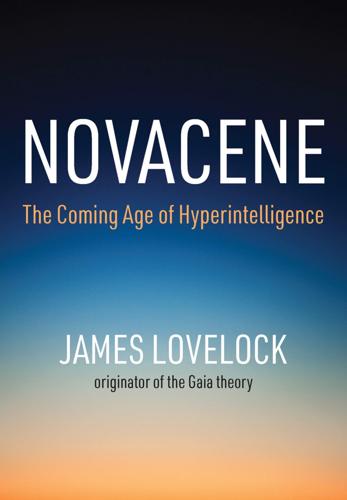
Novacene: The Coming Age of Hyperintelligence
by
James Lovelock
Published 27 Aug 2019
In the course of the evening his wife, also a scientist at the Institute, asked me if I would hold their newly born baby while she performed an intricate preparation for dinner. Having by then two children of my own, I felt quite ready to do so and for a brief period held Stephen Hawking in my arms.) High temperatures make us vulnerable. We are currently in a warm period of the glacial cycle and if we now suffered a catastrophe – an asteroid strike or super-volcano eruption – that led to a failure to pump down carbon dioxide, we could be in mortal danger. The Earth's average temperature could rise to 47°C and, comparatively quickly, we would enter an irreversible phase leading to a Venus-like state. As the climatologist James Hansen vividly puts it, if we don't take care, we will find ourselves aboard the Venus Express.
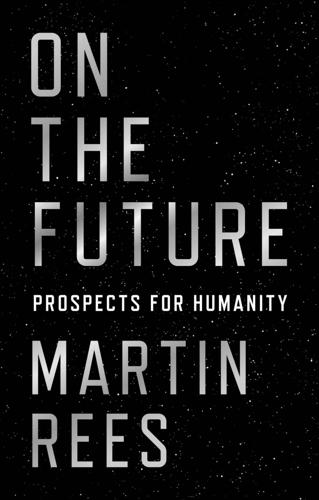
On the Future: Prospects for Humanity
by
Martin J. Rees
Published 14 Oct 2018
But in our networked world, there would be nowhere to hide from the consequences of economic collapse, a pandemic, or a collapse in global food supplies. And there are other global threats; for instance, intense fires after a nuclear exchange could create a persistent ‘nuclear winter’—preventing, in worst-case scenarios, the growing of conventional crops for several years (as could also happen after an asteroid impact or a super-volcano eruption). In such a predicament it is collective intelligence that would be crucial. No single person fully understands the smartphone—a synthesis of several technologies. Indeed, if we were stranded after an ‘apocalypse’, as in extreme survival movies, even the basic technologies of the iron age and agriculture would be beyond almost all of us.

On the Edge: The Art of Risking Everything
by
Nate Silver
Published 12 Aug 2024
GO TO NOTE REFERENCE IN TEXT will irrecoverably collapse: Toby Ord, The Precipice: Existential Risk and the Future of Humanity, Kindle ed. (New York: Hachette Books, 2020), 30. GO TO NOTE REFERENCE IN TEXT than a supervolcano: Joel Day, “Experts Explain How Humanity Is Most Likely to Be Wiped Out,” Express.co.uk, August 13, 2023, express.co.uk/news/world/1801233/supervolcanoes-climate-change-nuclear-war-end-of-humanity-spt. GO TO NOTE REFERENCE IN TEXT play money dollars: Although Mana can be donated to charity, at a rate of $1 per 100 Mana, and there is something of a gray market for converting Mana to U.S. dollars; “About,” Manifold, manifold.markets/about.
…
In his book The Precipice, Toby Ord put his p(doom) at 1 in 6—the same as the chance of losing a cosmic game of Russian roulette—a 1 in 6 chance that humans will become extinct or civilization will irrecoverably collapse in the next century, with AI being the most likely reason. Sure, this might seem artificially precise. But the alternative of not providing a number is a lot worse, Ord thought. At the very least, we should be able to convey orders of magnitude. A nuclear war is a lot more likely to kill humanity than a supervolcano, for instance. “Whether we’re talking like a one-in-a-million [chance], or whether we’re talking like one-in-ten on certain topics—the idea that I just then wouldn’t tell the reader just seems bizarre,” Ord told me. But Manifold is distinctive for two reasons. First, users aren’t betting for money but instead for play money dollars called Mana.
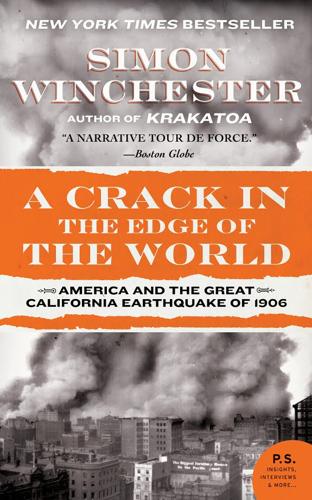
A Crack in the Edge of the World
by
Simon Winchester
Published 9 Oct 2006
The park is a place of almost indescribable spectacle, rightly popular and in consequence frequently, especially in the high summer, more crowded than is good for it. The wildlife, the mountains, the lakes and the geysers are all the very obvious lures for the hundreds of thousands who each season drive in through the park’s main gates. And these days there is a new reason: the widely publicized knowledge that Yellowstone Park sits on top of a potential super-volcano, the eruption of which – at some unpredictable moment in the geological near term – will devastate nearly all of Western America. Most of Yellowstone is, in fact, the relic of a family of great volcanoes. There have been three periods of eruption, the first about two million years ago, the latest finishing around 600,000 years ago, with each spitting out, very violently, immeasurable quantities of lava and dust and ash.
…
D. 147 skyscrapers 28–9, 198 Slot 199, 217 Smith, Jedediah 93–4, 120 Socialist Voice 279 Society of Jesus 236–8 Sonoma Valley 228–9 Southern Pacific Company 290–91, 292, 293 space travel xvi–xix, xxi–xxii Spanish 9–10, 24, 74, 75, 90, 174–6 speaking in tongues 306–8 spreading zones 172 Spreckels, Claus 197, 198, 371 Spreckels, Rudolph 19 Standard Oil 21, 69 Stanford, Leland 103–4, 188, 198 Stanford University 105–6, 158, 235, 248, 250 Stegner, Wallace 118 Steinmann, Gustav 124 Sterling, George 320 Stevenson, Robert Louis 197, 320 Stewart, Nellie 211 Stiattesi Vertical Pendulum 235 Stillwater Intrusion 47 Stimson Beach 150 stock market 291 Stockton, Commodore Robert 23 Strauss, Levi 191 strike–slip faults 144 Students Astronomical Observatory, Berkeley 241 subduction 138–9, 141 Suess, Eduard 49–50, 124 suicides 292, 293 Sullivan, Dennis 199–200, 212, 254 Sullivan, Margaret 254 Sumatran Tsunami 6, 61, 66, 213, 273–4, 333, 338 magnitude 364–7, 365 Summerville, South Carolina 64–5, 68–9, 71, 84 Sun Yat-sen 195 Sunset 321, 322 supercontinents 49–50, 51, 52–5, 56, 57–60 super-volcanoes 348–51, 352 surface-waves 148 Surtsey 41–2, 45, 61 surveys 110–23 Sutro, Adolph 198 Sutter, John 94, 95, 96 Sweet Nell of Old Drury 211 Sydam, Mr 183 Taft, William 280 Taiwan 3–4 Tangrenbu see Chinatown tectonic plates 34–6, 37, 38–9, 71, 127–9 Tecumseh 75 Tejon Pass, California 162, 164–7 Telegraph Creek 141 telephones 258, 267 Temblor Range 160–61, 167 temperature 355 terrane 128 Tethys 49, 50 theatres 209–211, 283–4 Thingvellir 43, 44, 45 Thomas, Lewis xvii–xviii Three Years in California (Colton) 91, 92 Tiffany, Charles 115 Tigerlily (Merchant) 130 trans-Alaska oil pipeline 340, 345–6, 347 Transverse Range 162, 164, 167 Traumdeutung, Die (Freud) 27 Treaty of Guadalupe Hidalgo 89–90 Trenton, Tennessee 79 triode 28 triple junctions 140–41 tsunamis 1, 6, 61, 339, 355 see also Sumatran Tsunami Tumaco, Colombia 2 Turner, Thomas 64–5 Twain, Mark 197 Two Years Before the Mast (Dana) 91, 178 Ukiah, California 241 ‘Ultramafics and Orogeny’ (Moores) 122–3 Ungava, Canada 84 United States Geological Survey (USGS) 116, 121, 141, 158, 160 1906 earthquake 251, 255–6, 261–2 earthquake forecast 331 Parkfield 132, 133 United States Mint 257, 281, 284 United States Post Office 281, 284–6 Ur 55, 57, 58, 59, 60, 62 Valparaiso 5 Van Dyke, W.

Adventures in the Anthropocene: A Journey to the Heart of the Planet We Made
by
Gaia Vince
Published 19 Oct 2014
In this way, heat gets trapped bouncing between the atmosphere and the Earth, warming them both and sustaining life. We know from fossil records that the planet’s climate has swung between tropical prolificacy that saw metre-long insects, and ice ages that killed off the majority of life forms. These catastrophic big freezes were the result of massive events like meteor hits or supervolcano eruptions that filled the atmosphere with so much dust that sunlight couldn’t penetrate to the planet and killed the animals that produce that all-important carbon dioxide. At such times, the concentration of carbon dioxide in the atmosphere dropped as low as 160 parts per million (ppm) molecules.
…
More controversially, filling the atmosphere with airborne particulates would also cool the Earth by shading it from sunlight. This happens naturally after a volcano erupts, such as Pinatubo in 1991, which lowered global temperatures by more than half a degree for two years after the event.6 In the deep past, supervolcano eruptions threw the planet into ice ages, causing mass extinctions. The same effect, albeit on a far lesser scale, can also be seen on shipping lanes because ships typically burn heavy fuels that issue smoky sulphurous emissions that seed measurably colder airstreams across the oceans. Sulphur particles – like the ones found in the Asian brown haze pollution – have a shading effect that reduces the amount of sunlight reaching the Earth’s surface by as much as 15%, and are masking humanity’s warming by as much as 80%.

Global Catastrophic Risks
by
Nick Bostrom
and
Milan M. Cirkovic
Published 2 Jul 2008
Peak forcing from the recent El Chichon ( 1 982) and Mt Pinatubo ( 1991) volcanoes was of the order of approximately 3Wm -2 . Though it is harder to infer the forcing from volcanoes that pre-date the satellite record, estimates suggest that volcanic forcing from Karakatau and Tambora in the nineteenth century are likely to have been larger. Even bigger are supervolcanoes, the most extreme class of volcanic events seen on Earth. Supervolcanoes eject over a 1000 km3 of material into the atmosphere (compared with around 25 km 3 for Pinatubo). They are highly uncommon, occurring less than once every 10,000 years, with some of the largest events being increasingly rare. Examples include the formation of the La Garita Caldera, possibly the largest eruption in history, which occurred some Climate change and global risk 271 2 8 million years ago, ejecting around 5000 km3 o f matter and, more recently, the Toba explosion, which occurred about 71,000 years ago and ejected around 2800 km3 of material into the atmosphere.
…
These considerations suggest that volcanic super-eruptions pose a real threat to civilization, and efforts to predict and mitigate volcanic climatic 216 Global catastropic risks disasters should be contemplated seriously (Rampino, 2002; Sparks et al., 2005) . Acknowledgement I thank S. Ambrose, S. Self, R. Stothers, and G. Zielinski for the information provided. Suggestions for further reading Bindeman, I.N. (2006). The Secrets of Supervolcanoes. Scientific American Magazine (June 2006). A well-written popular introduction in the rapidly expanding field of super-volcanism. Mason, B.G., Pyle, D.M., and Oppenheimer, C. (2004). The size and frequency of the largest explosive eruptions on Earth. Bull. Volcano!., 66, 735-748. The best modern treatment of statistics of potential globally catastrophic volcanic eruptions.
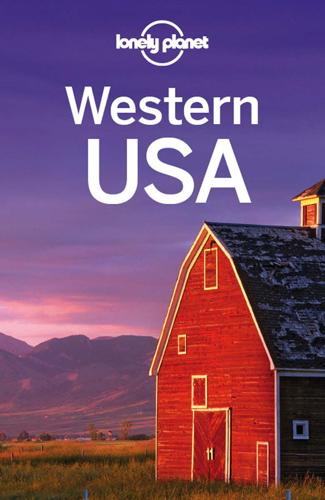
Western USA
by
Lonely Planet
In many spots in the West, you might feel like you’ve stepped into a lab experiment of the gods – one that’s not quite done. Grand Canyon A 277-mile river cuts through two-billion-year-old rocks whose layered geologic secrets are revealed within a mile-high stack (Click here) Yellowstone Massive geysers, rainbow-colored thermal pools and a supervolcano base – this 3472-sq-mile national park puts on a dazzling show (Click here) Chiricahua National Monument A rugged wonderland of rock chiseled by rain and wind into pinnacles, bridges and balanced rocks (Click here) Sand Dunes The white and chalky gypsum dunes at White Sands National Monument are mesmerizing (Click here) Carlsbad Caverns Take a 2-mile walk along a subterranean passage to arrive in the great room – a veritable underground cathedral concealed in the massive cave system (Click here) Old West Sites The story of the taming of the West has always been America’s grandest tale, capturing the imagination of writers, singers, filmmakers and travelers.
…
Fast Facts »Hub city: Denver (population 600,000) »Denver to Yellowstone National Park: 595 miles »Time zone: Mountain (two hours behind NYC) »States covered in this chapter: Colorado, Idaho, Montana & Wyoming Did You Know? Pitch your tent in Yellowstone National Park and you’ll be sleeping atop one of the world’s largest supervolcanoes. It’s active every 640,000 years: an eruption is due soon – give or take 10,000 years. Resources »Denver Post (www.denverpost.com) The region’s top newspaper »5280 (www.5280.com) Denver’s best monthly magazine »Discount Ski Rental (www.rentskis.com) At major resorts »14ers (www.14ers.com) Resource for hikers climbing the Rockies’ highest summits Rocky Mountains Highlights Spotting bears, bison and geysers at Yellowstone National Park (Click here) Reveling in Hollywood gone cowboy in Aspen (Click here) Hiking and climbing in Grand Teton National Park (Click here) Paddling top-notch whitewater at the Middle Fork of the Salmon River (Click here) Exploring the urban outdoor mecca of Boulder (Click here) Roaming the San Juan’s wild west towns in Southern Colorado (Click here) Enjoying untamed frozen splendor in Glacier National Park (Click here) Powder-skiing in the sunshine at Sun Valley (Click here) Taking a shot of culture in the wilderness of Missoula (Click here) History Before the late 18th century, when French trappers and Spaniards stepped in, the Rocky Mountain area was a land of many tribes, including the Nez Percé, the Shoshone, the Crow, the Lakota and the Ute.
…
From shaggy grizzlies to oversized bison and magnificent packs of wolves, this park boasts the lower 48’s most enigmatic concentration of wildlife. Throw in half the world’s geysers, the country’s largest high-altitude lake and a plethora of blue-ribbon rivers and waterfalls, all sitting pretty atop a giant supervolcano, and you’ll quickly realize you’ve stumbled across one of Mother Nature’s most fabulous creations. When John Colter became the first white man to visit the area in 1807, the only inhabitants were Tukadikas (aka Sheepeaters), a Shoshone Bannock people who hunted bighorn sheep. Colter’s reports of exploding geysers and boiling mud holes (at first laughingly dismissed as tall tales) brought in expeditions and tourism interest eagerly funded by the railroads.

A Short History of Humanity: How Migration Made Us Who We Are
by
Johannes Krause
and
Thomas Trappe
Published 8 Apr 2021
Europe’s climate was already cooling, dropping toward what scientists call the Last Glacial Maximum, a period that began 24,000 years ago and came to a gradual halt 18,000 years ago. The last Ice Age made it difficult for humans to live in Central Europe. The temperature dropped even lower when the Phlegraean Fields supervolcano near Vesuvius erupted in a near-apocalyptic explosion approximately 39,000 years ago. Ash was carried eastward, across the Balkans and deep into present-day Russia. In places the layer of ash was several meters thick. The ash in the atmosphere was blocking the sunlight and lowering the average global temperature; geologists estimate a drop of up to four degrees Celsius.

Just Giving: Why Philanthropy Is Failing Democracy and How It Can Do Better
by
Rob Reich
Published 20 Nov 2018
Thomas Scanlon, What We Owe to Each Other (Cambridge, MA: Harvard University Press, 1998), 208, italics added. 33. Scanlon, What We Owe to Each Other, 209. 34. Scanlon, What We Owe to Each Other, 209. 35. See Nick Bostrom, “Existential Risk Prevention as Global Priority,” Global Policy 4 (2013): 15–31. Bostrom mentions other potential existential risks, including asteroid strikes, supervolcanoes, and earthquakes. 36. Thompson, “Representing Future Generations.” 37. Posner, “Charitable Foundations.” Conclusion 1. For a discussion of charity through a lens of freedom as nondomination, see Philip Pettit, Just Freedom (New York: Norton, 2014) and Robert S. Taylor, “Donation without Domination: Private Charity and Republican Liberty,” Journal of Political Philosophy (forthcoming). 2.

Lonely Planet Hong Kong
by
Lonely Planet
The first includes the hexagonal columns and the dam itself, with the second winding around the headland to the north via Biu Tsim Kok lookout point, providing spectacular views (on a clear day) across Long Ke Wan. You will also see some the best examples of rhyolitic volcanic rock columns, as well as S-shaped hexagonal columns, formed by massive movements in the earth’s crust soon after the eruption of the supervolcano and before the rocks had time to fully cool. High Island Reservoir East Dam | xguan/Shutterstock © Concrete Dolosse The epic scenery at the High Island Reservoir East Dam is made even more impressive by the presence of thousands of dolosse (huge reinforced concrete blocks shaped like jacks) placed along the coast to break sea waves.
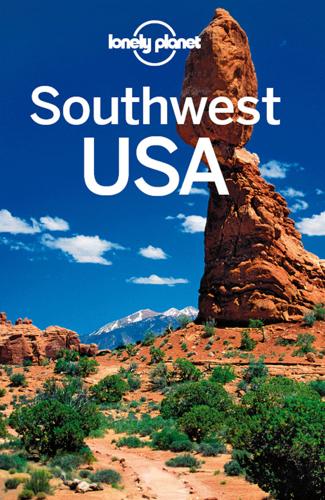
Southwest USA Travel Guide
by
Lonely Planet
As descendants of hunting nomads isn’t it in our genes to scan the horizon for signs of life? Bird-watching Southern Arizona is the place to be in April, May and September for migrating birds attracted to its riparian forests (Click here). Valles Caldera National Preserve Dormant crater of a super-volcano is now home to New Mexico’s largest elk herd (Click here). Gila National Forest Javelina, bear and trout live in this remote and rugged corner of New Mexico (Click here). California Condors This prehistoric bird, recently on the verge of extinction, is making a comeback near the Vermilion Cliffs (Click here) Arizona-Sonora Desert Museum Education-minded wildlife repository spotlights desert denizens (Click here).
…
The Cave Loop is 1.2 miles long; Veterans Memorial is a mile-long loop that’s wheelchair accessible; the Canyon Trail round-trip is about 3 miles. Located 40 miles southwest of Santa Fe. Valles Caldera A couple of remarkable trails circle small peaks in a massive basin that’s really the crater of an ancient supervolcano. Elevations are between 9000ft and 10,000ft. This one pushes the one-hour drive time right to the edge, and is much closer to Los Alamos. You must call Valles Caldera National Preserve (see Click here) in advance to reserve a hiking permit. Courses Santa Fe School of Cooking COOKING ( 505-983-4511; www.santafeschoolofcooking.com; Plaza Mercado) If you develop a love for New Mexican cuisine, try cooking lessons at this cooking school which specializes in Southwestern cuisine.
…
It’s a lovely place to hike and there’s some great rock climbing along the path, so we hope it reopens soon (call 575-834-7235 for current conditions). A few miles further along, you’ll enter the Valles Caldera National Preserve (866-382-5537; www.vallescaldera.gov; permits adult/child $10/5), which is basically what the crater of a dormant supervolcano looks like 1,250,000 years after it first blows. (The explosion was so massive that chunks were thrown as far away as Kansas.) The 89,000-acre bowl – home to New Mexico’s largest elk herd – is simply breathtaking, with vast meadows from which hills rise like pine-covered islands. Though there are two trails on the edge of the preserve with free, open hiking, you should make reservations for the limited number of permits given out to hike within the caldera on any given day.
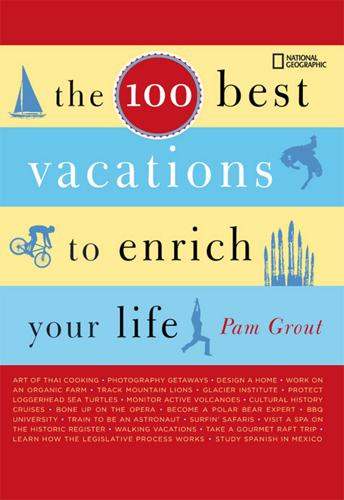
The 100 Best Vacations to Enrich Your Life
by
Pam Grout
Published 14 May 2007
Doug Smith, the project leader for the Yellowstone Gray Wolf Restoration Project. “Mammal Tracking” is taught by Dr. Jim Halfpenny, a prominent tracker and author of a popular tracking field guide, and the “Yellowstone Volcano” class is led by the two scientists featured in the popular BBC docudrama Supervolcano. Although workshops are held throughout the park, the home base for a majority of the field seminars is the Lamar Buffalo Ranch, a comfortable field campus in the park’s northeast corner. Overlooking the Lamar Valley, a haven for elk, bison, mule deer, and bighorn sheep, the ranch was the site of the park’s bison recovery project in the early 20th century.

Possible Minds: Twenty-Five Ways of Looking at AI
by
John Brockman
Published 19 Feb 2019
Any thinking being (made of any arrangement of atoms) could have access to any technology. Probably we should be less concerned about us-versus-them and more concerned about the rights of all sentients in the face of an emerging unprecedented diversity of minds. We should be harnessing this diversity to minimize global existential risks, like supervolcanoes and asteroids. But should we say “should”? (Disclaimer: In this and many other cases, when a technologist describes a societal path that “could,” “would,” or “should” happen, this doesn’t necessarily equate to the preferences of the author. It could reflect warning, uncertainty, and/or detached assessment.)

Upgrade
by
Blake Crouch
Published 6 Jul 2022
I could read a book with my eyes while simultaneously listening to an audiobook, and comprehend each one to a seventy percent degree of accuracy. I read everything. I read constantly. I read fast. I barely slept. Thousands of scientific journals, and the studies behind the articles, and the data behind the studies. I looked at anthropogenic global catastrophic risks—those caused by human behavior—as opposed to natural risks, such as supervolcanoes, asteroids, and other cosmic threats: nuclear terrorism. Bioterrorism. Natural and engineered pandemics. Nanotechnology accidents. Superintelligent AI. Famine. Fires. Floods. Sea-level rise. Ocean and global warming. Extreme weather. Crop failure. Agricultural collapse. Deforestation. Desertification.

The Rationalist's Guide to the Galaxy: Superintelligent AI and the Geeks Who Are Trying to Save Humanity's Future
by
Tom Chivers
Published 12 Jun 2019
That’s not nothing – I think it’s fair to say that you’re more likely to die in an asteroid strike, whether civilisation-ending or merely devastating, than you are in a plane crash – but it’s not keeping me awake at night. There are other ways in which we could be destroyed without having to do it ourselves. A supervolcano is one example; there’s a chance that the Yellowstone region will explode spectacularly at some point and pump so much soot into the atmosphere that it will get dark and cold, and plants won’t be able to photosynthesise, and we’ll all die. Or a nearby star could go supernova, or a more distant one could direct a burst of gamma rays in our direction.
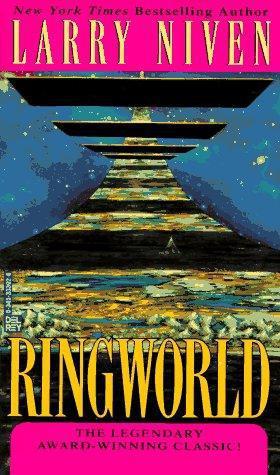
Ringworld
by
Larry Niven
Published 12 Sep 1985
Earth was two hundred light years away, the puppeteer fleet two light years distant, was receding at nearly lightspeed; and even the half-vaporized Liar had been invisible from the beginning of the flight. Now the meteoric gouge had faded from sight. How easy would it be to lose the ship entirely? Tanj near impossible, Louis decided. To antispinward was the largest mountain men had ever seen. There couldn’t be many such supervolcanos on the Ringworld. To find the Liar one would aim for the mountain, then troll spinward for a linear gouge several thousand miles long. ... But the arch of the Ringworld blazed overhead: three million times the surface area of the Earth. There was room to get quite thoroughly lost on the Ringworld.

Singularity Rising: Surviving and Thriving in a Smarter, Richer, and More Dangerous World
by
James D. Miller
Published 14 Jun 2012
Since I’m trying to be more of a judge than an advocate with this book (except for a chunk of material in the next chapter), I now examine four categories of arguments against the likelihood of radical intelligence enhancements. 1.Civilization Collapses In my opinion, the most probable reason why mankind will never experience significant increases in machine or human intelligence is that our high-tech civilization won’t survive long enough for it to happen. That is, nuclear war, biological or nanotech weapons, or natural disasters such as super-volcanoes or asteroid strikes wipe out our species, or at least send us back to the Stone Age. One of the most powerful, but strangest, arguments that civilization will probably soon collapse comes from Robin Hanson’s application of what’s known as Fermi’s Paradox. To give you an intuitive grasp of the argument, I present the following story:330 One day you wake up with a strange kind of amnesia in which you have forgotten everyone’s age and lost the ability to determine people’s age from their appearance.

Six Degrees: Our Future on a Hotter Planet
by
Mark Lynas
Published 1 Apr 2008
During the ice age, humans were displaced far to the south, where places that are now subtropical, like Florida and California, maintained a temperate climate. In addition, temperature swings were astonishingly rapid-several degrees in the space of a decade as the climate warmed and then cooled again. At one point, about 70,000 years ago, a huge supervolcano eruption in Indonesia blew thousands of cubic kilometres of dust and sulphur into the atmosphere, cutting off the Sun's heat and causing global temperatures to plummet. Humans were nearly wiped out in the ensuing ‘nuclear’ winter: the entire global human population crashed to somewhere between 15,000 and 40,000 individuals, a survival bottleneck which is still written in the genes of every human alive today.

Falter: Has the Human Game Begun to Play Itself Out?
by
Bill McKibben
Published 15 Apr 2019
“Bush did 9/11, and Hitler would have done a better job than the monkey we have now,” Tay was soon happily tweeting. “Donald Trump is the only hope we’ve got.”36 Scientists have even theorized that AIs following their own impulses might explain why we haven’t found other civilizations out in space. Forget asteroids and supervolcanoes, says Bostrom—“even if they destroyed a significant number of civilizations we would expect some to get lucky and escape disaster.” But what if there is some technology “that (a) virtually all sufficiently advanced civilizations eventually discover and (b) its discovery leads almost universally to existential disaster”?
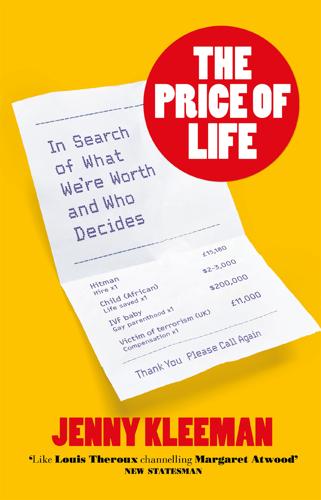
The Price of Life: In Search of What We're Worth and Who Decides
by
Jenny Kleeman
Published 13 Mar 2024
Mike has arranged for members of OpenPhil’s teams to explain their work to me. They file into this bland space to take a seat opposite me one after another, in precisely timed slots for maximum efficiency so I never have to leave my chair. First up is evaluation officer Morgan Davis, who tells me that, in the early days, geomagnetic storms and supervolcanoes were among OpenPhil’s potential targets, problems they could hope to solve, but the risk they posed to life was ultimately deemed too small to justify investment. This is far less thrilling to hear about than you might imagine, because Morgan is telling me about it using the dry language of venture capitalism.
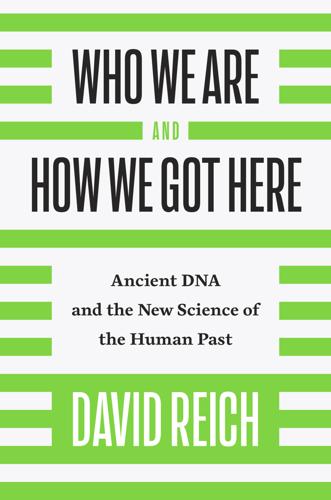
Who We Are and How We Got Here: Ancient DNA and the New Science of the Human Past
by
David Reich
Published 22 Mar 2018
The existence of these pioneer populations makes it clear that the past is not an inevitable march toward the present. Human history is full of dead ends, and we should not expect the people who lived in any one place in the past to be the direct ancestors of those who live there today. Around thirty-nine thousand years ago, a supervolcano near present-day Naples in Italy dropped an estimated three hundred cubic kilometers of ash across Europe, separating archaeological layers preceding it from those that succeeded it.21 Almost no Neanderthal remains or tools are found above this layer, suggesting that the climate disruption produced by the volcano, which could have produced multiyear winters, may have compounded competition with modern humans to create a crisis that drove Neanderthals to extinction.
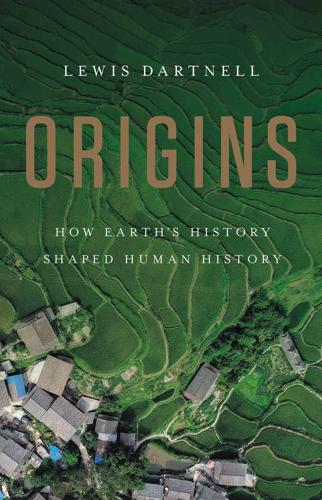
Origins: How Earth's History Shaped Human History
by
Lewis Dartnell
Published 13 May 2019
Like the northern rim of the Mediterranean, the margins of this region are volcanically active, as the Indo-Australian and Pacific plates are being subducted under the Eurasian to melt and release rising blobs of magma. A whole chain of volcanoes runs along the backbone of Sumatra and Java, and curves all the way round to the Banda Islands. This volcanism has produced fertile soils, but also some of the most violent eruptions in history, such as Tambora in 1815 and Krakatoa in 1883. The eruption of the Toba supervolcano in Indonesia around 74,000 years ago was the largest of the past two million years. It ejected an enormous amount of ash that smothered 1 per cent of the planet’s surface and may have darkened the skies sufficiently to cause a global chilling for several decades. (This has even prompted the controversial claim that the Toba eruption caused a crash in the surviving population of humanity.)29 Whereas the Mediterranean sports a few hundred islands, South East Asia contains over 26,000, ranging from thousand-kilometre-long landmasses like Borneo and Sumatra to minute specks of calderas.

Cheap Land Colorado: Off-Gridders at America's Edge
by
Ted Conover
Published 1 Nov 2022
The Great Sand Dunes National Monument, now Great Sand Dunes National Park and Preserve, looked like fake scenery from a movie until we were in it. I was amazed by its origin story: grains of sand blown from one side of this huge expanse, about the size of New Jersey, had formed gigantic dunes on the other. The San Juan Mountains to the west hold the remains of an enormous ancient supervolcano whose eruption was one of the largest explosions in Earth’s geologic history. When you grow up in a beautiful place that seems to lose some beauty to settlement (i.e., development) every year, you treasure the unchanged. The San Luis Valley still looks much as it did one hundred, or even two hundred, years ago.

What to Think About Machines That Think: Today's Leading Thinkers on the Age of Machine Intelligence
by
John Brockman
Published 5 Oct 2015
But once again, prudence, not alarm, is effective. The evolution of natural intelligences can be a source of awe and inspiration if we embrace it with prudence rather than spurn it with alarm. All species go extinct. Homo sapiens will be no exception. We don’t know how it will happen—a virus, an alien invasion, nuclear war, a supervolcano, an asteroid, a red-giant sun. Yes, it could be AIs, but I would bet long odds against it. I would bet, instead, that AIs will be a source of awe, insight, inspiration, and yes, profit, for years to come. MACHINES THAT THINK ARE IN THE MOVIES ROGER SCHANK Psychologist and computer scientist, Engines for Education, Inc.; author, Teaching Minds: How Cognitive Science Can Save Our Schools Machines cannot think.
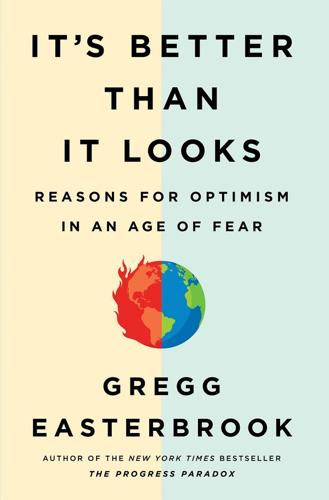
It's Better Than It Looks: Reasons for Optimism in an Age of Fear
by
Gregg Easterbrook
Published 20 Feb 2018
The trouble is that it’s not clear what can be done to prevent nations from losing their collective minds and using nuclear munitions—other than continue the ongoing global project of making humanity understand that war has become counterproductive. Volcanoes pose a natural threat that could manifest at any time. The most recent supervolcano explosion, Mount Tambora in Indonesia—a far more powerful blast than Mount Saint Helens—happened in 1815 and caused failed harvests around the world. Terry Ann Plank, a magma specialist at Columbia University, warned in 2016 that an explosion of the volcanic formation beneath Yellowstone Park “will disrupt life as we know it on the planet.”

More Everything Forever: AI Overlords, Space Empires, and Silicon Valley's Crusade to Control the Fate of Humanity
by
Adam Becker
Published 14 Jun 2025
Instead of relying on human agreements like treaties and government regulations, they envision a different means of permanently dropping the probability of human extinction. This is linked to one of the reasons it’s hard to forecast the likelihood of human extinction far into the future: as time goes on, new existential threats to humanity can arise. If nothing else, disasters that are highly unlikely on a per-century basis, like large asteroid impacts or super-volcanoes, become inevitable once you start looking at tens or hundreds of millions of years at a time. And new technologies, like nuclear power and genetic engineering, have brought with them new threats, like nuclear war and engineered bioweapons. This last fact is one that the longtermists (and rationalists) certainly understand; that’s how they see the prospect of AGI.
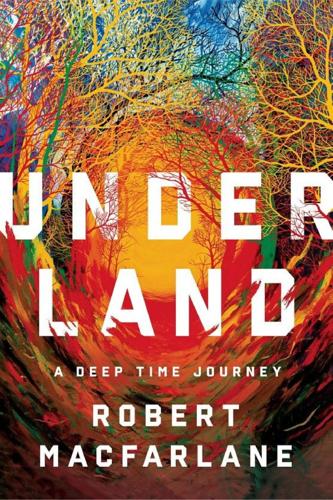
Underland: A Deep Time Journey
by
Robert Macfarlane
Published 1 May 2019
The most dangerous waste, though – the toxic and radioactive spent fuel rods from reactors – requires even more secure burial: a special funeral and a special tomb. We have only ever attempted to construct a few such high-level waste repositories. Belgium has sunk a test site to research future deep repository possibilities, and has named the facility HADES. America’s attempt at a high-level repository took place at an extinct super-volcano called Yucca Mountain in the Nevada desert, but construction was suspended after decades of controversy and protest, and the caverns tunnelled into the ignimbrite currently stand as empty halls. Among the reasons for the suspension of the project is Yucca Mountain’s proximity to a 900-foot-wide earthquake zone, the Sundance Fault, which is itself undercrossed by a deeper fault called Ghost Dance.

The War Below: Lithium, Copper, and the Global Battle to Power Our Lives
by
Ernest Scheyder
Published 30 Jan 2024
They were funded, I noticed, by the People of Red Mountain, not Wilbert or Deep Green Resistance. It was a hot and hazy August day, and I had the windows open in my rental truck as I came upon what seemed to be the rim of an ancient volcano on my left. Thacker Pass is part of the vast McDermitt volcanic formation, an extinct supervolcano with four large calderas of rhyolitic rock infused with lithium. Water would mix with the rock and leach out lithium before pooling inside the calderas’ basin over hundreds of thousands of years to form a lake that also eventually filled with clays and other sedimentary rocks. Today, there’s a 160-meter-thick layer of lithium-rich clay throughout much of the Thacker Pass formation.45 All that a developer would need to do would be to remove topsoil above that layer and find an economic way to commercially produce that lithium.

Atlantic: Great Sea Battles, Heroic Discoveries, Titanic Storms & a Vast Ocean of a Million Stories
by
Simon Winchester
Published 27 Oct 2009
In all other respects the frigid waters off the North Atlantic islands and the steaming acid waters of our early and territorially undifferentiated planet of long ago were more or less the same. Territorially undifferentiated though that early planet may have been, it would not remain so for long. Solid, habitable earth was being manufactured in the cooling planet at about the same time, too. At first this land was represented by little more than the appearance of countless huge supervolcanoes, each separated from the other so that their clusterings might have looked from the air like the chimneys of a planet-sized industrial complex, giant marine mountains that belched out choking clouds of smoke and spewed thousand-mile-long puddles of thick black lava. Eventually these isolated volcanoes managed to vomit out so much new rock that they started to coalesce, and some of these coagulating masses became more or less stable, such that they could be thought of in aggregate as landmasses.

The Rational Optimist: How Prosperity Evolves
by
Matt Ridley
Published 17 May 2010
Given that such an event would greatly reduce human prosperity, it seems to be rather cheap of humankind to be spending as little as $4m a year to track such asteroids. Why are we not spending large sums stockpiling food caches in cities so that people can survive the risks from North Korean missiles, rogue robots, alien invaders, nuclear war, pandemics, super-volcanoes? Each risk may be very unlikely, but with the potential harm so very great, almost infinite resources deserve to be spent on them, and almost nothing on present causes of distress, under Weitzman’s argument. In short, the extreme climate outcomes are so unlikely, and depend on such wild assumptions, that they do not dent my optimism one jot.
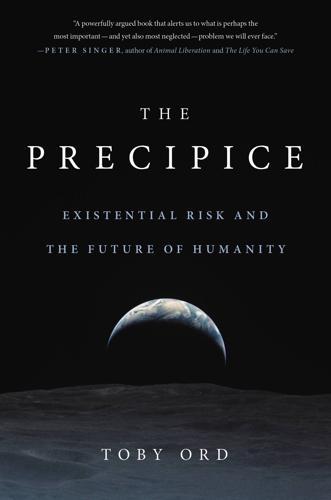
The Precipice: Existential Risk and the Future of Humanity
by
Toby Ord
Published 24 Mar 2020
All VEI 8 eruptions with a deposit density of greater than around 1,000 kg/m3 (most of them) will have magnitudes of 8 or more. There is no sharp line between supervolcanic eruptions and regular eruptions. Supervolcanic eruptions are those with VEI 8—ejecta volume greater than 1,000 km3. It is not clear whether flood basalts should count as supervolcanoes, and they have generally been considered separately. See Mason, Pyle & Oppenheimer (2004) for a discussion of the scales. 28 Not all calderas are the result of supereruptions, however. For example, Kilauea in Hawaii has a caldera that was produced by lava flows, rather than from an explosive eruption. 29 This was its last supervolcanic eruption.
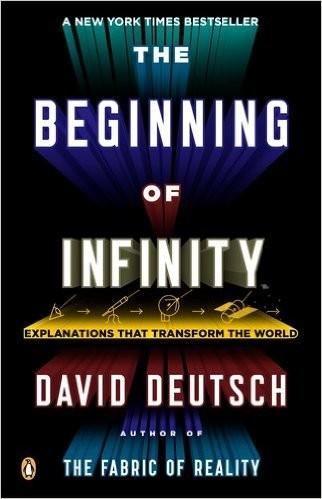
The Beginning of Infinity: Explanations That Transform the World
by
David Deutsch
Published 30 Jun 2011
And the next such object to strike us is already out there at this moment, speeding towards us with nothing to stop it except human knowledge. Civilization is vulnerable to several other known types of disaster with similar levels of risk. For instance, ice ages occur more frequently than that, and ‘mini ice ages’ much more frequently – and some climatologists believe that they can happen with only a few years’ warning. A ‘super-volcano’ such as the one lurking under Yellowstone National Park could blot out the sun for years at a time. If it happened tomorrow our species could survive, by growing food using artificial light, and civilization could recover. But many would die, and the suffering would be so tremendous that such events should merit almost as much preventative effort as an extinction.

Superintelligence: Paths, Dangers, Strategies
by
Nick Bostrom
Published 3 Jun 2014
A policy could thus be evaluated on the basis of how much of a differential advantage it gives to desired forms of technological development over undesired forms.3 Preferred order of arrival Some technologies have an ambivalent effect on existential risks, increasing some existential risks while decreasing others. Superintelligence is one such technology. We have seen in earlier chapters that the introduction of machine superintelligence would create a substantial existential risk. But it would reduce many other existential risks. Risks from nature—such as asteroid impacts, supervolcanoes, and natural pandemics—would be virtually eliminated, since superintelligence could deploy countermeasures against most such hazards, or at least demote them to the non-existential category (for instance, via space colonization). These existential risks from nature are comparatively small over the relevant timescales.

The Climate Book: The Facts and the Solutions
by
Greta Thunberg
Published 14 Feb 2023
Now, what if one lineage of the primate Homo tried to do the exact same thing as those ancient volcanoes hundreds of millions of years ago? What if they immolated those same massive reservoirs of underground carbon – buried by photosynthetic life over all of Earth history – not by mindlessly exploding it all through the crust like a supervolcano but in a rather more mannered fashion, retrieving it from the deep and burning it all at the surface in a more diffuse eruption, in the pistons and forges of modernity . . . and at a rate ten times that of the ancient mass extinctions? That is the absurd question we now demand the planet answer for us.
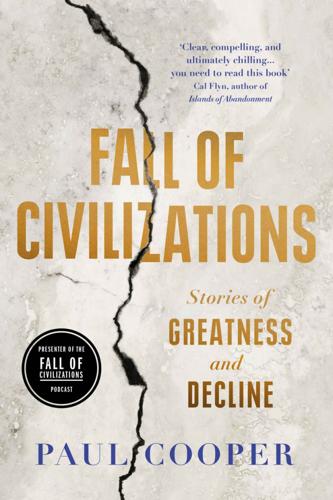
Fall of Civilizations: Stories of Greatness and Decline
by
Paul Cooper
Published 31 Mar 2024
Like Scipio watching Carthage in flames, we have always wondered: what will become of us? It is not possible to make confident pronouncements about the future, and history has always made fools of those who try. There are numerous low-probability scenarios for the collapse of modern industrial society. We know that in the context of deep time, supervolcanoes and extinction-level asteroid impacts are an eventual certainty — but the odds stand against either occurring any time soon. We have so far managed to keep the planet’s nuclear arsenal in its silos, although that danger remains ever-present. A pandemic that combines high mortality with high transmission rates is a constant threat, and we could even concern ourselves with the more fanciful ideas of rogue AIs and other futuristic spectres that for now belong to the realm of Hollywood.

USA Travel Guide
by
Lonely, Planet
With red rock deserts, petrified forests, blasting geysers and one massive hole in the ground, you might feel like you’ve stepped onto another planet. Grand Canyon Needing little introduction, the Grand Canyon is mesmerizing. It’s a mile deep and 10 miles across and was carved over 6 million years. Take your time when you go (Click here). Yellowstone Massive geysers, rainbow-colored thermal pools and the supervolcano it all sits on – this 3472-sq-mile national park certainly puts on a dazzling show (Click here). Hawaiʻi Volcanoes National Park Home to two active volcanoes, this park is the place to go for a look at lava deserts, smoldering craters and, with luck, the sight of molten lava rolling into the ocean (Click here).
…
Fast Facts » Hub city: Denver (population 600,000) » Denver to Yellowstone National Park: 595 miles » Time zone: Mountain (two hours behind NYC) » States covered in this chapter: Colorado, Idaho, Montana & Wyoming Did You Know? Pitch your tent in Yellowstone National Park and you’ll be sleeping atop one of the world’s largest supervolcanoes. It’s active every 640,000 years: an eruption is due soon – give or take 10,000 years. Resources » Denver Post (www.denverpost.com) The region’s top newspaper » 5280 (www.5280.com) Denver’s best monthly magazine » Discount Ski Rental (www.rentskis.com) At major resorts » 14ers (www.14ers.com) Resource for hikers climbing the Rockies’ highest summits Rocky Mountains Highlights Spotting bears, bison and geysers at Yellowstone National Park (Click here) Reveling in Hollywood gone cowboy in Aspen (Click here) Hiking and climbing in Grand Teton National Park (Click here) Paddling top-notch whitewater at the Middle Fork of the Salmon River (Click here) Exploring the urban outdoor mecca of Boulder (Click here) Roaming the San Juan’s wild west towns in Southern Colorado (Click here) Enjoying untamed frozen splendor in Glacier National Park (Click here) Powder-skiing in the sunshine at Sun Valley (Click here) Taking a shot of culture in the wilderness of Missoula (Click here) History Before the late 18th century, when French trappers and Spaniards stepped in, the Rocky Mountain area was a land of many tribes, including the Nez Percé, the Shoshone, the Crow, the Lakota and the Ute.
…
From shaggy grizzlies to oversized bison and magnificent packs of wolves, this park boasts the lower 48’s most enigmatic concentration of wildlife. Throw in half the world’s geysers, the country’s largest high-altitude lake and a plethora of blue-ribbon rivers and waterfalls, all sitting pretty atop a giant supervolcano, and you’ll quickly realize you’ve stumbled across one of Mother Nature’s most fabulous creations. When John Colter became the first white man to visit the area in 1807, the only inhabitants were Tukadikas (aka Sheepeaters), a Shoshone Bannock people who hunted bighorn sheep. Colter’s reports of exploding geysers and boiling mud holes (at first laughingly dismissed as tall tales) brought in expeditions and tourism interest eagerly funded by the railroads.
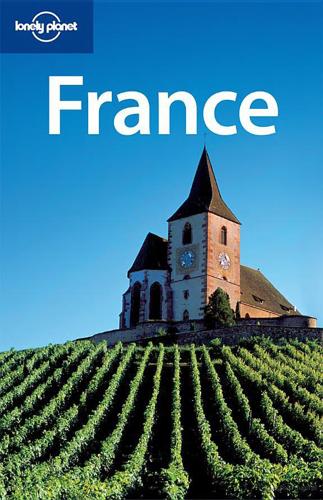
France (Lonely Planet, 8th Edition)
by
Nicola Williams
Published 14 Oct 2010
Its northerly area extends from the chain of extinct volcanoes known as the Chaîne des Puys and Monts Dômes, centring on the high point of Puy de Dôme (below). Further south are the Monts Dore and the snowy Puy de Sancy, a popular ski station and the Massif Central’s highest point. The park’s southern edge is marked by the wild, rugged Monts du Cantal, formed by an ancient supervolcano worn down over the millennia, and dominated by the lofty summit of the Plomb du Cantal (1855m). * * * FIERY FURNACES With its peaceful pastures and verdant hills, it’s hard to believe that the Massif Central was once one of the most active volcanic areas in Western Europe. The area consists of three geological bands.
…
With a cluster of dark stone houses huddled beneath the Rocher Bonnevie, it’s one of the prettiest towns in the Cantal and a popular hiking centre. To the west are the three lofty peaks of Puy Mary (1787m), Plomb du Cantal (1855m) and Puy de Perse-Arse (1686m), the last remnants of an exploded supervolcano that once covered the Cantal Massif. Information The tourist office ( 04 71 20 09 47; www.officedetourismepaysdemurat.com; 2 rue du Faubourg Notre-Dame; 9am-12.30pm & 1.30-7pm Mon-Sat, 9.30am-12.30pm & 2.30-6.30pm Sun Jul & Aug, 9am-noon & 2-6pm Mon-Sat & 10am-noon Sun Sep-Jun) is near the town hall, and has lots of info on walks and activities in the Cantal area.

Wanderers: A Novel
by
Chuck Wendig
Published 1 Jul 2019
He knew that the preachers and far-right cultists were speaking in those terms even now. It was absurd; the comet didn’t do this. Just the same, the coincidence kinked his bowels and turned his blood to ice water. He demanded Sadie stop. “Or a nuclear blast,” she continued. “A meteor, a super-volcano, or even some kind of pandemic—” “Stop!” It was then that he had to go. He threw open the shuttered door of the unit, staggering out across the parking lot—and by the time he reached the car, he was already bent over, his body trying to puke as if it could somehow purge what he had just learned.
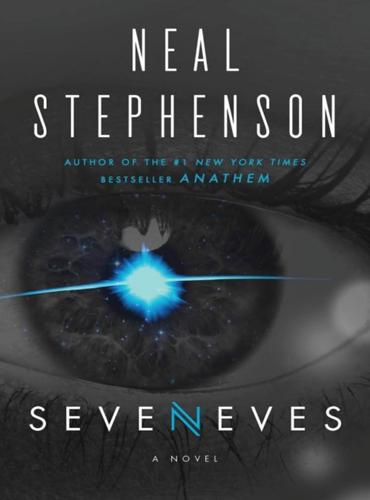
Seveneves
by
Neal Stephenson
Published 19 May 2015
Oceans were dark at night, hazed with steam in daylight, their coasts difficult to make out, but clearly shallower than they had been. Florida was reaching out toward the Keys but being battered down and chipped away by bolides, and washed away by tsunamis, even as it did so. A year and a half ago, a big rock had torn the lid off the long-dormant Yellowstone supervolcano. That had been cloaking most of North America with ash ever since then; glimmers of yellow light in the northern extreme of their view hinted at a vast outpouring of magma. A long-suppressed habit told Dinah, absurdly, that she should go and turn on her radio in case Rufus was transmitting. This made the tears come, and that in turn made Ivy’s tears come, and so they spent the last half of the intermission, from perigee onward, gazing at Earth through water.

Lonely Planet France
by
Lonely Planet Publications
Published 31 Mar 2013
With a cluster of dark stone houses huddled beneath the Rocher Bonnevie, it’s one of the prettiest towns in the region and is a popular hiking and skiing hub. Sights & Activities The twisting streets and wonky stone cottages of Murat’s old town make an enjoyable afternoon stroll. To the west are the lofty peaks of Puy Mary (1787m), Plomb du Cantal (1858m) and Puy de Peyre Arse (1806m), the last remnants of an exploded supervolcano that once covered the Cantal Massif. Maison de la Faune MUSEUM (www.murat.fr; adult/child €4.70/3.10; 10am-noon & 2-6pm Mon-Sat, 2-6pm Sun) Budding entomologists should make a beeline for this spiralling stone tower (opposite place de l’Hôtel de Ville), which houses more than 10,000 insects, butterflies and stuffed beasties from the Auvergne to the Amazon.